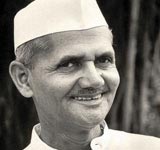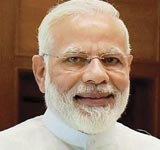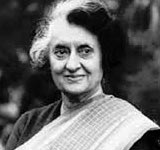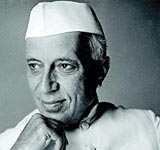1. Atal Bihari Vajpayee
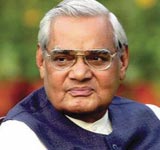
Atal Bihari Vajpayee was an Indian politician who served as Prime Minister of India into two mandates, one very brief in 1996 and another from 1998 to 2004. He was the biggest leader of the Bharatiya Janata party and of Indian nationalism in Indian politics. He served as a member of the Parliament of India for almost fifty years. In January 1951, he founded the Bharatiya Sangh Party and became a member of the Parliament of India for the first time in 1957. In 1977 he joined the Janata Party, a newly formed Hindu nationalist party. From 1977 to 1980, he served as Minister of Foreign Affairs of the Morarji Desai government. In 1980, together with a group of discontent with the politics of the Janata Party, he left the Party, and participated in the formation of the Bharatiya Janata Party (BJP).
Lal Bahadur was born in the city of Mughalsarai (modern Uttar Pradesh). To take part in the passive resistance movement of Mahatma Gandhi, in 1921 he began studying at the nationalist private university in Kashi. After graduation, he received the title Shastri, that is, scientist.
3. Pamulaparti Venkata Narasimha Rao
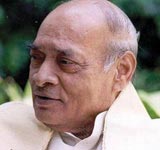
Pamulaparthi Venkata Narasimha Rao was a political leader of Indian, born on 28 of June of 1921 in Karimnagar in the state of Andhra Pradesh, who died on 23 of December of 2004 in New Delhi. He studied Law at the Universities of Bombay and Nagpur, and from this time he became a great leader for the independence of India, linking to the Congress Party and quickly reaching Parliament. He held several occasions, but for a short time various ministerial portfolios in the 60s and was chief minister of the state of Andra Pradesh (governor) between 1971 and 1973. During the exercise of this position he acquired great notoriety for his loyalty to Indira Gandhi and when she returned to power she came to occupy the ministries of Interior, Defense and Foreign Affairs.
Narendra Modi is an Indian politician and the 14th Prime Minister of India. Before he had been Chief Minister of the state of Gujarat. Modi is a Hindu nationalist and was a member of the right wing organization Rashtriya Swayamsevak Sangh (RSS), is a controversial figure, both in India and internationally and its administration has been criticized for not knowing how to prevent violence in Gujarat in 2002. Modi is credited with the creation of an environment for a high rate of economic growth in Gujarat tempered by statistical changes that allowed artificially inflating growth figures. However, his government has also been criticized for not having a significant positive impact on the human development of the State. While Modi was governor of the state of Gujarat, a progrom of 2002 occurred, which claimed the lives of some 800 Muslims, which, along with numerous criticisms, earned him the ostracism of the United Kingdom and the impossibility of traveling to the United States.
5. Manmohan Singh
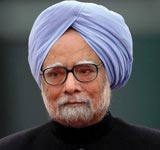
Dr. Manmohan Singh was the fourteenth Prime Minister of India and member of the Congress Party. He acceded to the presidency of the government of India after the victory in the 2004 elections of the coalition headed by the Congress Party. Manmohan Singh is an economist by training and has studied at Nuffield College in Oxford and St John's College in Cambridge as well as the University of Punjab. He is considered as the architect of India's economic reform program in the 1990s. It was under his leadership, as Minister of Finance in the Rao Government (1991-1996), that a program of liberalization and openness to the world economy was introduced. Manmohan Singh was elected to the Rajya Sabha between 1991 and 1996, as a representative of Assam. Although his economic reforms were very popular among the middle class (but much less so among the poor and nationalist circles), he lost the Lok Sabha elections in a South Delhi constituency in 1999.
Indira Priyadarshini Gandhi was the Prime Minister of India in January 1966 - March 24, 1977 and continued on January 14, 1980 until she suffered a murder on October 31, 1984. She studied at Somerville College, Oxford. On January 19, 1966, she was elected as President of the Congress Party to replace Lal Bahadur Shastri. Indira was later killed in a shooting action in 1984. Born as Indira Nehru, she married Feroze Gandhi. She was the first woman to become the prime minister of India. She was killed in 1984 in a terrorist act carried out by two bodyguards who embraced the teachings of Sikhism. The action was triggered by instructions instructing soldiers to attack the Golden Temple in Punjab. The temple was made the headquarters of Sikh followers who wanted Punjab as their country. In honor of Indira, her name is now enshrined for one of the airports in New Delhi.
Jawaharlal Nehru, also known as Pandit or Pandit Nehru was a Indian politician, which was the first (and even today's longest term) prime minister from 1947 to 1964. Leader of the socialist wing at the Indian national congress during and after India's independence from the British empire, became India's prime minister in independence from August 15, 1947 until his death. A leading figure in the Indian independence movement, Nehru was elected by the Congress Party to take on the inaugural post of India's independent prime minister, and re-elected when the Congress Party won the first general election of India in 1952. As one of the founders of the Movement Non-Aligned, was also an important figure in postwar international politics.
8. Rajiv Gandhi
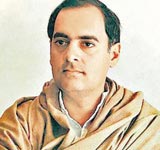
Rajiv Ratna Gandhi was the Indian politician. Eldest son of Indira and Feroze Gandhi, he was the sixth prime minister of India(and the third of his family to hold this position) from the murder of his mother on October 31, 1984 until his resignation on December 2, 1989, after the defeat of his party in a general election. Having become prime minister of India at 40 years of age places him as the youngest person to hold that position. Before devoting himself to politics, Rajiv Gandhi worked as a professional pilot for the Indian Airlines company after having studied at the University of Cambridge and Imperial College, London. He married Sonia Maino, a woman of Italian nationality whom he met in his time as a university student. The couple had two children: Rahul Gandhi (June 19, 1970) and Priyanka Vadra Gandhi (January 12, 1972).
9. Haradanahalli Doddegowda Deve Gowda
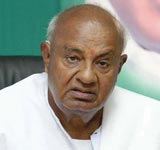
Haradanahalli Doddegowda Deve Gowda (born on 18 of May, 1933 in Haradanahalli, state of Mysore today Karnataka, India) is an Indian politician who was the 14th Prime Minister of the Republic of India (1996- 1997) and the 14th chief minister of the state of Karnataka (1994-1996). Born in an agricultural family, he won his first seat at the Karnataka state assembly in 1962, becoming Karnataka's chief minister. In the late 1970s Deve Gowda enlarged his career in the Janata party and was an important figure in the reunification of successor, the Janata Dal party, after the original group separated in 1980.
10. Chandra Shekhar
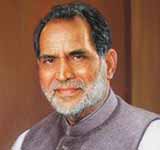
From 1962 to 1977, Chandrasekhar was a member of the Upper House of India, Rajya Sabha. He traveled to India in 1984, which tried to understand India well. Indira Gandhi got a little nervous due to this padyatra. When the Janata Party government was formed in 1977, he took the post of National President of Janata Party, not taking the post of minister. In 1977, he became the first Lok Sabha MP from Ballia district. He established the Samajwadi Janata Party by taking some leaders from the Janata Dal after the persuasion of the earlier leader Vishwanath Pratap Singh. His government formed a small majority government after the Indian National Congress supported his decision not to Election. His relationship with the Congress was later changed due to the allegation of him being a leader of Rajiv Gandhi. After the Congress denied his support to the government, he announced his resignation with the support of 40 MPs. Chandrashekhar, who remained in the post of Prime Minister for 7 months, made an agreement on March 6, 1911. He however held the office of Prime Minister until the national elections. Chandrasekhar was very popular for his parliamentary conversation. He also received the Outstanding Parliamentarian Award in 1995.
11. Morarji Desai
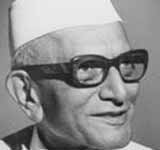
Morarji Desai was India's freedom fighter and the country's 4th Prime Minister. He was the first Prime Minister who was from other party than Indian National Congress. He is the only person to have been awarded India's highest honor Bharat Ratna and Pakistan's highest honor Nishan-e-Pakistan. Morarji Desai quit the British government job in 1930 and became a soldier of the freedom struggle. In 1931, he became the secretary of the Congress Committee of Gujarat Pradesh. He established a branch of the All India Youth Congress and became its president on the instructions of Sardar Patel. He became Prime Minister at the age of 81. Before this he tried many times to become Prime Minister but was unsuccessful. But it is not that Morarji was not capable of becoming Prime Minister. In fact, he was unfortunate that despite being the senior-most leader, he was not made Prime Minister even after the demise of Pandit Nehru and Lal Bahadur Shastri. Morarji Desai became the Prime Minister of the country in March 1977 but his term as Prime Minister could not be completed. He had to quit as Prime Minister due to differences with Chaudhary Charan Singh.
12. Inder Kumar Gujral
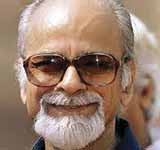
Inder Kumar Gujral was an Indian politician who served as the 12th Prime Minister of India, in April 1997 and March 1998. Gujral was the third PM to be of the Rajya Sabha, the first was Indira Gandhi. Inder Kumar Gujral was born on December 4, 1919 in Jhelum, his parents were Avtar Narain and Pushpa Gujral. He studied at DAV College, Hailey College of Commerce and Forman Christian College University, Lahore. He also participated in the Indian independence movement and was imprisoned in 1942 during the Quit India movement. As a student he became a member of the Communist Party of India.
13. Gulzarilal Nanda
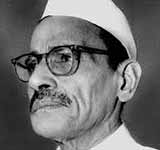
Gulzari Lal Nanda contributed to India's freedom struggle. Nanda's life was devoted to the nation from the very beginning. In 1921, he participated in the Non-Cooperation Movement. Nanda was rich in versatility. He served as a lecturer in economics at the National College in Mumbai. He was also the secretary of the Labor Association in the textile industry of Ahmedabad and he held this position from 1922 to 1946. He was always aware of the problems of the workers and kept trying to diagnose them. He also had to go to jail during the Satyagraha movement in 1932 and during the Quit India Movement in 1942–1944. Gulzari Lal Nanda was a cabinet minister in the Union Cabinet and took charge of the independent ministries. Nandaji, being the senior most aide in the cabinet, twice took care of the caretaker prime minister. His first term was from 27 May 1964 to 9 June 1964, when Pandit Jawaharlal Nehru died. The second term lasted from 11 January 1966 to 24 January 1966, when Lal Bahadur Shastri died in Tashkent. Nandaji was elected a member of the Lok Sabha in the first five general elections.
14. Vishwanath Pratap Singh
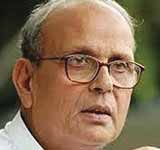
Vishwanath Pratap Singh was the eighth Prime Minister of the Republic of India and had been the Chief Minister of Uttar Pradesh. His reign lasted less than a year. Vishwanath Pratap Singh, who became Prime Minister due to the fall of Rajiv Gandhi government, obtained this position on 2 December 1989 through general election. Singh is known as the Prime Minister for attempting to reform India's backward castes. 1989 Lok Sabha Elections complete. The Congress suffered heavy losses. It got only 197 seats. Vishwanath Pratap Singh's National Front won 146 seats. The BJP and the Left parties expressed their intention to support the National Front. The BJP then had 86 MPs and the Left had 52 MPs. Thus the National Front got the support of 248 members. VP Singh was describing himself as the prime ministerial candidate. He felt that the defeat of Rajiv Gandhi and the Congress was possible only because of him. But Chandrashekhar and Devi Lal also joined the race for the post of Prime Minister. In such a situation, it was decided that VP Singh would be crowned as Prime Minister and Chaudhary Devi Lal would be made the Deputy Prime Minister. As soon as he became Prime Minister, he ran towards the Golden Temple to heal the wounds of the Sikhs.
15. Charan Singh
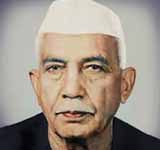
Chaudhary Charan Singh was the fifth Prime Minister of India. Chaudhary Charan Singh lived his entire life in the dignity of Indianness and rural environment. The proposal of Purna Swaraj was passed in the Lohar session of the Congress, due to which, young Chaudhary Charan Singh became active in politics. He formed the Congress Committee in Ghaziabad. When Mahatma Gandhi called for the Civil Disobedience Movement in 1930, he supported him by making salt on the Hindon River. For which he also had to go to jail. He has been considered the leader of farmers. The Zamindari Abolition Bill drafted by him was based on the welfare principle of the state. On 1 July 1952, due to his abolition of Zamindari system in UP and the poor got rights. He also created the post of accountant. In 1954, he passed the Uttar Pradesh Land Conservation Act in the interest of farmers. He became the Chief Minister of Uttar Pradesh on 3 April 1967. He resigned as Chief Minister on 17 April 1968. He had good success in the mid-term elections and again became the Chief Minister on 17 February 1970. After that when he became the Home Minister in the Central Government, he established the Mandal and Minorities Commission. Established National Bank for Agriculture and Rural Development in 1979 as Finance Minister and Deputy Prime Minister. On 28 July 1979, Chaudhary Charan Singh became Prime Minister with the support of Samajwadi parties and Congress (U).

